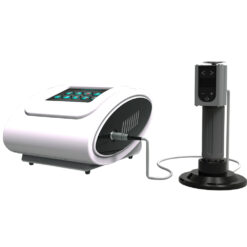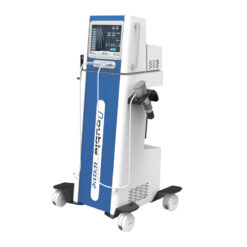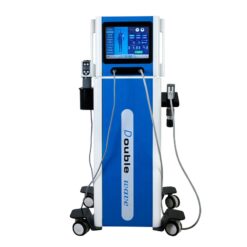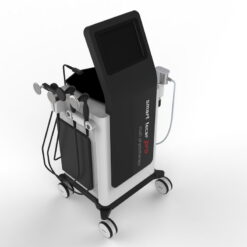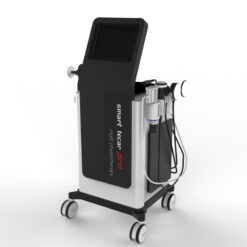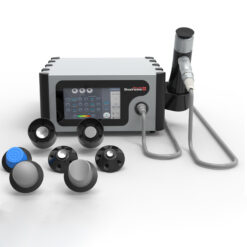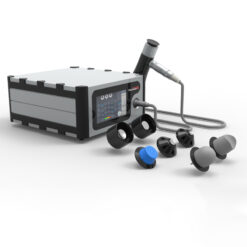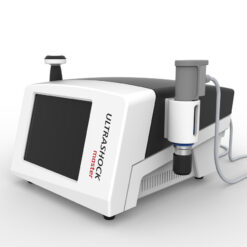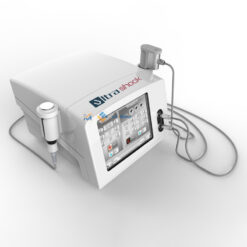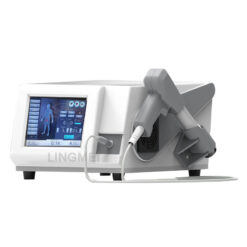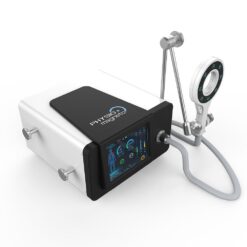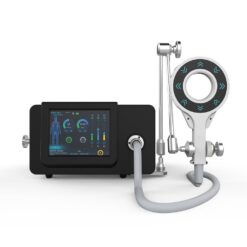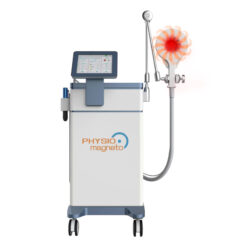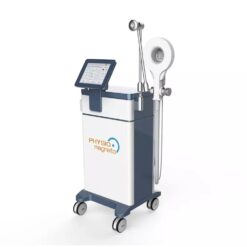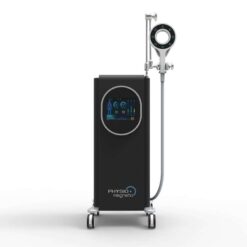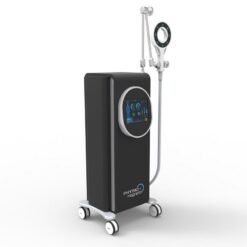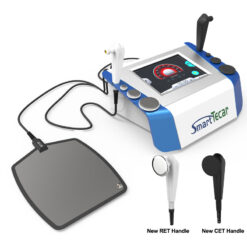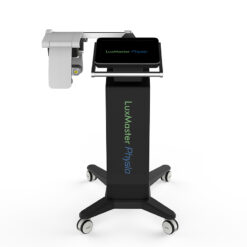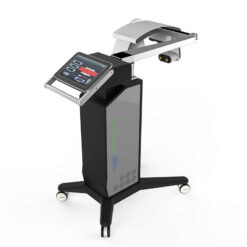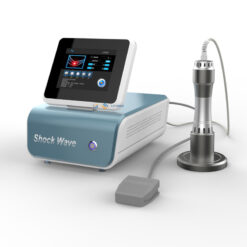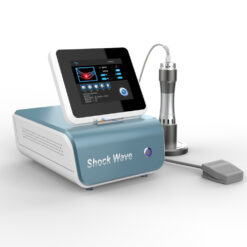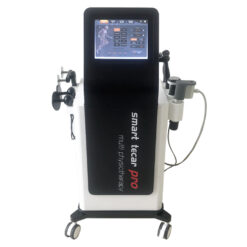Low-level light therapy (LLLT), low level laser therapy also known as photobiomodulation or cold laser therapy, is a medical and therapeutic technique that uses low-level lasers or light-emitting diodes (LEDs) to stimulate tissue healing and reduce pain and inflammation. It is a non-invasive and non-thermal therapy, meaning it does not produce significant heat during the treatment.
Here are some key points about low-level light therapy:
- Light Sources: LLLT devices typically use red or near-infrared light with wavelengths ranging from 600 to 1000 nanometers. These specific wavelengths of light penetrate the skin and are absorbed by cells and tissues.
- Cellular Effects: LLLT is believed to work at the cellular level. When light is absorbed by cells, it can stimulate various biological processes, including increased energy production (ATP), enhanced circulation, and the release of certain cellular signaling molecules.
- Applications: LLLT has been used for a variety of medical and therapeutic purposes, including pain management, wound healing, skin rejuvenation, and treating conditions such as arthritis, musculoskeletal injuries, and certain neurological disorders.
- Pain Management: LLLT is often used to reduce pain and inflammation in conditions like chronic pain, sports injuries, and arthritis. It may help by reducing inflammation and promoting the body’s natural healing processes.
- Wound Healing: LLLT has shown promise in accelerating the healing of wounds, including diabetic ulcers, surgical incisions, and burns. It can enhance tissue repair and reduce the risk of infection.
- Hair Growth and Skin Rejuvenation: Some studies suggest that LLLT can stimulate hair growth in individuals with certain types of hair loss (e.g., androgenetic alopecia) and improve the appearance of the skin by promoting collagen production.
- Safety: LLLT is considered safe when administered by trained professionals and used within established parameters. It is non-invasive, painless, and typically has minimal side effects.
- Device Types: LLLT devices come in various forms, including handheld devices for home use and larger systems used in clinical settings. The choice of device and treatment parameters depends on the specific condition being treated.
It’s important to note that while LLLT has shown promise in some applications, the scientific evidence supporting its effectiveness can vary depending on the condition being treated. As with any medical or therapeutic treatment, it’s essential to consult with a healthcare professional before undergoing LLLT to determine its suitability for your specific needs and to ensure proper administration.
Low level light therapy for PAIN:
Low-level light therapy (LLLT) has been explored as a non-invasive option for managing various types of pain. It is often used to reduce pain and inflammation in conditions such as chronic pain, musculoskeletal injuries, arthritis, and neuropathic pain. Here’s how LLLT is used for pain management:
- Mechanism of Action: LLLT is thought to work by several mechanisms, including:
- Increased Blood Flow: LLLT can promote vasodilation (widening of blood vessels), which improves blood flow to the treated area. This increased circulation can help reduce inflammation and provide nutrients necessary for tissue repair.
- Cellular Effects: Light at specific wavelengths is absorbed by mitochondria within cells, leading to an increase in adenosine triphosphate (ATP) production. This boost in cellular energy can enhance the healing process and reduce pain.
- Anti-Inflammatory Effects: LLLT has been shown to reduce the production of pro-inflammatory cytokines and increase the release of anti-inflammatory mediators, helping to control inflammation.
- Treatment Process: LLLT is typically administered using a handheld device or a larger clinical system. The light source emits low-level laser or LED light at specific wavelengths onto the affected area. Treatment sessions are relatively short, usually lasting between a few minutes to half an hour, depending on the condition and the device used.
- Pain Conditions Treated: LLLT has been used for various pain-related conditions, including but not limited to:
- Musculoskeletal Pain: This includes conditions such as tendonitis, sprains, strains, and muscle pain. LLLT can help reduce pain and promote tissue healing in these cases.
- Arthritis: LLLT may provide relief for people with osteoarthritis or rheumatoid arthritis by reducing joint pain and inflammation.
- Neuropathic Pain: Some studies have explored the use of LLLT for neuropathic conditions like diabetic neuropathy or peripheral neuropathy, where it may help alleviate pain and improve nerve function.
- Chronic Pain: LLLT can be a part of a multimodal approach to managing chronic pain conditions, such as fibromyalgia or chronic low back pain.
- Safety: LLLT is considered safe when administered by trained professionals and used within established parameters. It is non-invasive and typically does not cause significant side effects. However, it’s essential to follow appropriate safety guidelines and consult with a healthcare provider before undergoing LLLT treatment, especially if you have underlying medical conditions.
- Evidence: The effectiveness of LLLT for pain management can vary depending on the specific condition and individual factors. While some studies have shown positive results, more research is needed to establish its efficacy conclusively. It may work better for some individuals than others.
Low level light therapy for SLIM:
Low-level light therapy (LLLT) has been explored as a potential treatment for body contouring and slimming. While there is some interest in using LLLT for this purpose, it’s important to note that the effectiveness of LLLT for slimming is a topic of ongoing research:
- Mechanism of Action: LLLT for slimming typically involves the use of low-level lasers or LEDs to target fat cells in the body. The idea is that the light energy penetrates the skin and is absorbed by the fat cells, causing them to release their contents, such as triglycerides. This release of fat is thought to result in a reduction in the size of fat cells, leading to a slimmer appearance.
- Treatment Process: LLLT for slimming is often delivered through specialized devices that emit low-level light at specific wavelengths. These devices are applied directly to the skin in the area of concern. Treatment sessions are relatively short, and multiple sessions are usually recommended to achieve the desired results.
- Safety: LLLT is generally considered safe when administered by trained professionals and used within established parameters. It is non-invasive and typically does not cause pain or significant side effects. However, it’s essential to follow appropriate safety guidelines and consult with a healthcare provider before undergoing LLLT treatment for slimming.
- Complementary Approach: LLLT for slimming is often used as a complementary approach to diet and exercise. It is not a substitute for a healthy lifestyle. To achieve and maintain a slim and toned appearance, it is important to combine LLLT, if deemed effective, with a balanced diet and regular physical activity.
- Consultation: If you are interested in LLLT for slimming, it is advisable to consult with a qualified healthcare professional or practitioner experienced in the use of LLLT devices. They can assess your individual needs and provide guidance on whether LLLT is an appropriate option for you.
It’s important to approach claims about LLLT for slimming with caution and to be aware that results can vary widely from person to person. Additionally, the regulatory status of such treatments may vary by country, so it’s essential to seek treatment from reputable providers and ensure that any device used is approved for its intended use.
LLLT PRODUCT






